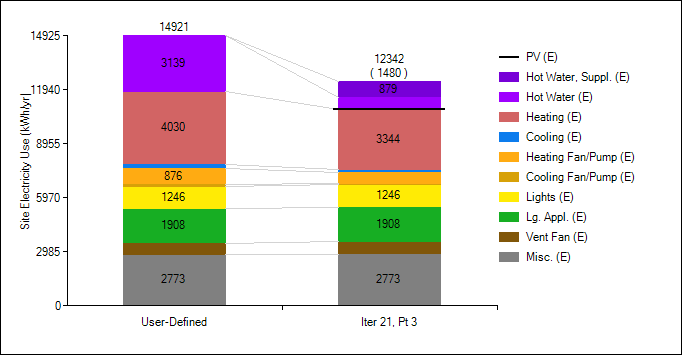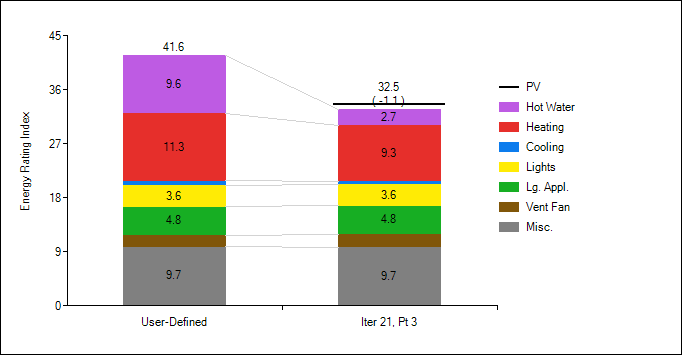Hello.
I've noticed some odd behavior when modelling net-zero homes in BEopt 2.8. We set a target ERI of something like -5 to ensure we reached zero,** but many of the output points with negative ERI have net energy consumption from the grid. How is this possible?
Per RESNET:
Energy Rating Index = PEfrac * [TnML / (TRL* IAFRH)] * 100
PEfrac=(TEU -OPP) / TEU
TEU= Total energy use of the Rated Home including all rated and nonratedenergy features where all fossil fuel site energy uses (Btufossil) are converted to equivalent electric energy use (kWheq) in accordance with Equation 4.1-3.
OPP=On-Site Power Production as defined by Section 4.2.2.7of this Standard.
You should only get a negative ERI if OPP > TEU, yet in this example below TEU (12342) is greater than OPP (12342-1480):


** We did this because for some reason the net-zero optimization back-tracks all the way to initial conditions (or nearly) if it overshoots net-zero, rather than hunting in the vicinity of the overshoot/back-tracking to a bit prior. This repeated execution of a full modelling run takes ludicrous amounts of modelling time and wastes lot of electricity to boot. In contrast, ERI optimization allows one to slightly overshoot in a more reasonable amount of time, and then select among the results in the vicinity. When I tried Net-Zero optimization (which I had to abort because of the excessive back-tracking) I got a package with OPP=10,861 and TEU=10,829. That should give a nearly zero PEfrac and therefore zero ERI, but the reported ERI was actually -4.2!
I also know that ERI in v2.8 is not recommended because the algorithms have shifted since 2015 (ventilation, home size adjustment), but those changes are to "[TnML / (TRL* IAFRH)]", not PEfrac.




